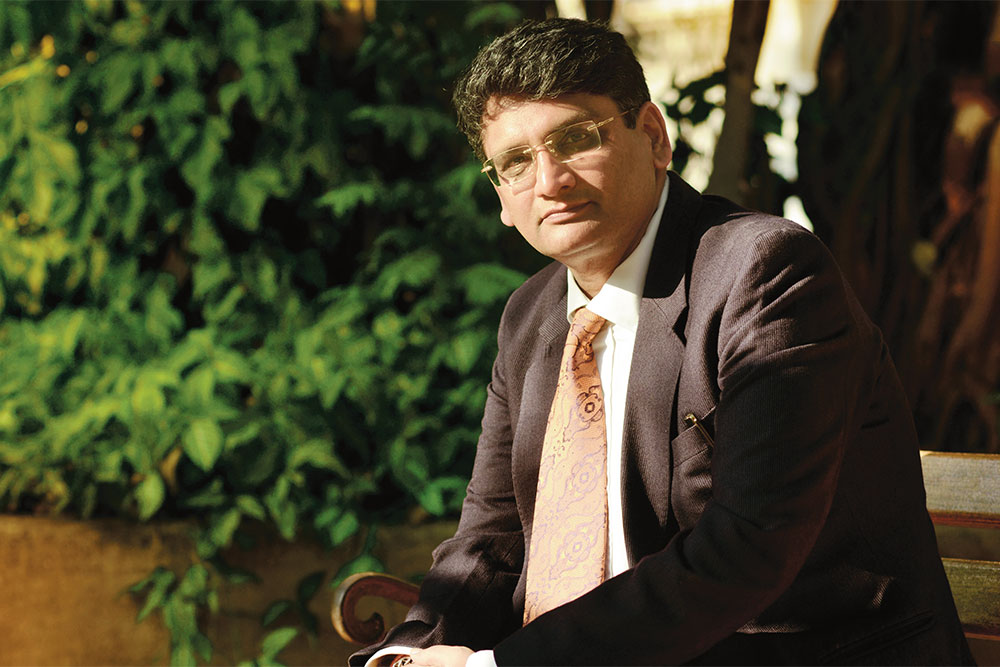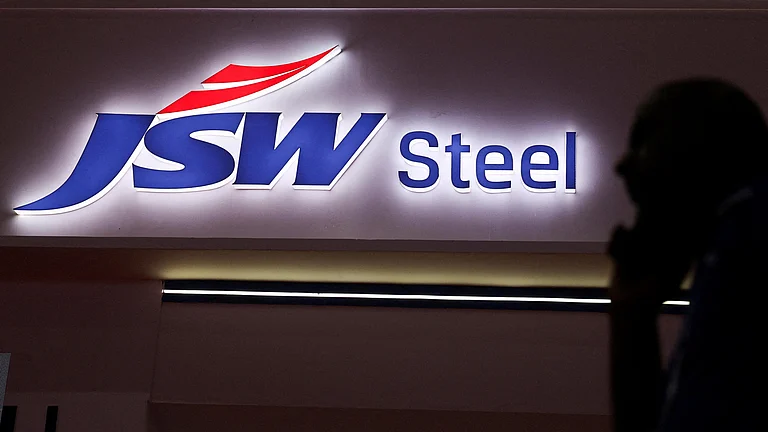At the outset, let me confess that Shemaroo Entertainment (SEL), which is in the film and entertainment content business, did not appeal to me when it went public last September at an offer price of ₹170 and at a 10% discount for retail allotees at ₹153. Its debut on the bourses was anything but a blockbuster opening.
On the first day of listing — October 1 — the stock struggled to hold its head above water and over the next fortnight fell to a low of ₹145. Running an investment advisory firm for the past two years, I have seen several cases that have helped keep my skeptical instincts alive; there was no reason for Shemaroo to be any different. It had all the right ingredients to make a discerning investor wary: high debt, negative cash flows, legal issues, promoters’ conflict of interest and a business model that seemed suspect.
Incidentally, Shemaroo and I share the same year of birth and I grew up with it in the 1970s when it was a popular circulating library of 200 sq ft in south Mumbai — with the three Maroo brothers — Raman, Buddhichand and Atul — running the show. I am told that they have retained this small shop for sentimental reasons.
So, it’s not surprising, then, that in its over five decades of existence, SEL created a content library of over 2,900 titles with perpetual rights for over 750 films and aggregated rights (limited ownership) for the rest. It distributes this content to broadcasting and digital media platforms and has recently launched movies on Google+. Revenue models to monetise this content range from pay-by-transaction, subscription and advertisement support such as YouTube advertisements.
Vote of confidence
I observed that HDFC Mutual Fund had fallen in love with the stock: it had become the largest non-promoter shareholder with an 8% equity stake. The fund was an anchor investor at ₹170, and, post listing, bought the stock at ₹177-174 levels and then ten days later again at ₹152 levels. The purchases were spread across their schemes, including their monthly income long-term debt scheme.
In fact, the debt scheme indicates high safety with 75% invested in debt instruments and only 25% of its corpus value of ₹3,558 crore (as on September 30, 2014) invested in equity of just 35 companies. The mutual fund bought 8% (2,173,245 shares) for an aggregate of around ₹38 crore at an average ₹172.59 per share. That’s a resounding vote of confidence for Shemaroo from the highly-respected fund house.
Today, between the fund house and the promoters, who collectively own a 65.82% stake, the aggregate holding works out to nearly 74%. It must be noted that the promoters have not pledged a single share. Incidentally, HDFC Bank features as a lender to Shemaroo, with financials showing that it had sanctioned an unsecured loan of ₹15 crore, of which nearly ₹14 crore was drawn on July 31, 2014.
A closer look
What works for SEL is the scale of monetising content over existing and emerging digital platforms. SEL is the preferred partner of choice for movie producers, broadcasting channels and other media platforms, not only for its vast content but also its industry expertise, knowledge and relationships. Shemaroo has established strong relationships with traditional media channels such as UTV Movies, Star Gold, Sony, TV Today, NDTV, Doordarshan and Hathway; new media platforms such as Youtube; telecom service providers such as R-Com, Airtel and Tata Docomo and with production houses such as RK Films, Mukta Arts and Viacom 18 Digital TV.
SEL’s bread-and-butter business comes from its participation in the second and subsequent cycles of a film broadcast rather than in the first cycle that involves theatre, television and overseas releases. Though the first cycle generates over 90% of revenue, the risk is much higher on account of the film turning out to be a flop. Moreover, such participation involves investment of several crores. SEL, however, participates in the first cycle of ancillary revenue streams such as new media and home video distribution, which contribute less than 10% of revenue in the first cycle.
SEL decides on the cost of the content till it is confident of achieving the desired return on investment at the portfolio level. Such cost is determined by considering factors such as viewership rating, box office collections, cast, awards, producer’s track record, genre, reviews and comparable movie valuation.
Currently, over 50% of SEL’s revenues come from syndicating rights to various broadcasting channels for over 1,000 films from its vast library of over 2,900 films. Increasing digitisation has meant lower carriage fees by up to 20% for broadcasters. This would lead to an increase in profitability for them and, consequently, more investment in programming. Thus, increased content acquisition by broadcasters spells a good time for content owners.
On YouTube, Shemaroo currently has 32 of its own channels running and gets up to 2 million views a day and up to 60 million views a month. The revenue model here involves getting a share of the advertisement revenue that YouTube makes through banner, pre-roll and mid-roll ads on various Shemaroo channels. SEL also has a VCD, DVD and Blu-ray product presence of over 1,300 titles across 2,000 retail stores, including major chains across 75 towns and cities in the country.
According to a report by KPMG and Ficci, by 2017, the size of the internet segment as part of India’s media and entertainment industry is expected to show a CAGR of 32% to touch ₹8,700 crore, while the film segment is expected to clock 12% CAGR to reach ₹19,300 crore over the same period.
In FY16 and FY17, the industry dynamics and drivers are well in place to post CAGR of 13% to 18% over the next three years, with the rollout of 4G next year and cheap, under-₹5,000 smartphones. Internet penetration will be faster than TV and Shemaroo, with its huge content library and flexibility to slice and dice its content to cater to needs, is well-positioned to capture the large-scale opportunities opening in both. Movie channels are second in popularity to general entertainment channels and each channel typically broadcasts eight movies a day. Even after considering repeats, each movie channel would need a large number of movies to broadcast. They would have to come to Shemaroo to tap its vast film library content.
Over the next three years, internet penetration is projected to touch 50 crore users in India and that is practically 40% of the population. Also internet advertising, which is growing fast, already accounts for 10% of the overall media entertainment ad spend. The growth momentum in this space is expected to be over 30% annually for the next three years.
Shemaroo plans to strongly leverage on digital platforms. Its model is to continue investing in the cheaper second and third cycles instead of the production of full movies, the cost of which can take time to recover and which run the risk of failure.
Plenty of risks
Shemaroo has negative net operating cash flows, with inventories and receivables having gone up considerably. Also, the company has fully utilised secured loan limits from its lenders. Since the IPO proceeds will be used to buy and create more film and content rights, the next couple of years may see continuing pressure on operating cash flows.
However, as it may be adding permanent and aggregate rights content to its library to leverage later, negative cash flows should not sound alarm bells for now. Also, film star Jackie Shroff filed a civil suit in July 2014 against the promoters for being treated shabbily as a minority shareholder in one of the promoters’ associate companies. There is significant conflict of interest as the promoters run other companies in a similar line of business.
But I was particularly concerned about the negative cash flows and high debt. At the half-yearly results conference call, I was expecting the management to inform us that IPO proceeds will be used to manage the over ₹150 crore borrowings and bring down the interest burden from over ₹18 crore annually. Instead, it stated the contrary: it would maintain the debt-equity at just over 1X and actually build up more content. It wasn’t worried as long as return on investment was good. Its renewed vigour and confidence post IPO strengthening of the net worth was evident. The net worth, post-IPO, stands at ₹310 crore as on September 30, 2014 and the IPO proceeds continue to reflect in the cash balance of ₹140 crore.
Even after an interest charge of ₹12.6 crore, its PAT looked quite impressive at ₹18 crore for the first half of the current fiscal. With fresh IPO funds being deployed in the second half, I expect the bottom line to strengthen to over ₹40 crore for the whole year. That translates into an estimated EPS of ₹15 for FY15 and a forward earnings multiple of 12X. The book value should also move up from ₹114 (H1FY15) to over ₹120 for FY15. Meaning, on a price-to-book value, the stock trades under 1.5X. Though not strictly comparable, its peer group of Eros and Saregama has higher relative valuations.
The big picture
SEL has posted strong revenue and PAT growth of 26% over the past four years and a return of equity of above 15%. Last fiscal, PAT was nearly ₹28 crore despite an outgo of nearly ₹19 crore towards interest cost. Equity capital was around ₹20 crore (face value of ₹10), translating into an EPS of ₹14 (dividend was just 5%, or ₹0.50, as most shares pre-IPO were held by the promoters). With a net worth of ₹177.45 crore, the book value stood around ₹88.
Now, what if the PAT for FY15 or FY16 crosses a non-linear ₹50 crore with reduced interest charge and incremental revenues from new-age digital platforms harnessing newer technology? That would result in an EPS closer to ₹20 and a PE of 8X at its current price of ₹160. I changed my mind rather quickly at ₹154 levels in the third week of October 2014 with a first target of ₹200 for 2015, but that has already been achieved this year. It has corrected to ₹194 (December 3, 2014) after hitting a post-listing high of ₹215 on November 20, 2014.
In 2015, the share price should move towards ₹250 and beyond, backed by an improving top and bottom line — the latter’s growth is non-linear to some extent, and that is what is exciting to look forward to. One does, however, hope that the IPO proceeds are judiciously used to improve the working capital cycle and to keep creating or acquiring fresh content. For now, the company is positioned to be a winner in the years to come as content is king or should we say Queen, as SEL holds the aggregate rights for that super-hit Bollywood flick as well!
The writer and his client have an interest in this stock.











